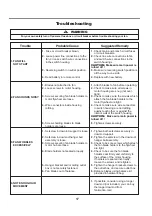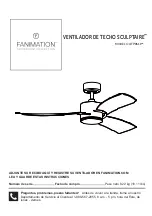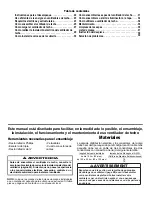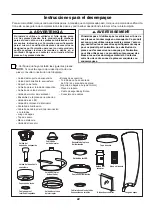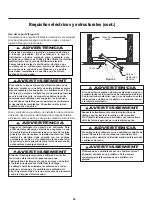
How to Operate Your Ceiling Fan
13
How to Assemble Your Light Kit or Cap (continued)
Figure 11
11.
Assemble the steel cap to the switch housing
assembly by twisting in a clockwise direction.
(Figure 11)
Figure 1
Figure 2
Figure 4
MAIN FUSE BOX
For illustrative purposes only
-not
intended to cover all types of controls
2.
Restore electrical power to the outlet box by turning
the electricity on at the main fuse box. (Figure 2)
Check to see that all connections are tight, including
ground, and that no bare wire is visible at the wire
connectors, except for the ground wire. Do not
operate fan until the blades are in place. Noise and
fan damage could result.
WARNING
1.
IMPORTANT:
Using a full range dimmer switch
(not included) to control fan speed will damage the fan.
To reduce the risk of fire or electrical shock, do not use
a full range dimmer switch to control the fan speed.
(Figure 1)
WARNING
Do not operate this fan with a variable (Rheostat) wall
controller or dimmer switch. Doing so could result in
damage to the ceiling fan's remote control unit.
3.
To make fan operational, install 23A/12V battery
(included) in hand-held remote transmitter, with fan
power off. Then follow the remote code setting
process. (If not used for long periods of time, remove
battery toprevent damage to transmitter). Store the
remote away from excessive heat or humidly.
(Figure 3)
NOTE: The remote unit has 32 different code
combinations. To prevent possible interference from or
to other remote units, simply change the combination
code in the remote and receiver.
4.
To set the remote code with a small screwdriver or
ball point pen (neither included), slide dip switches
firmly up or down. (Figure 4)
NOTE: Factory setting is all up. Do not use this
position.
Dip Switch
ON DIP
1 2 3 4 5
Remote
12V 23A
Battery (1 pcs)
Figure 3
Steel Cap
Switch Housing
Assembly

















